Another way of playing is not to wander in the crowd, but to shuttle between delicious foods, not to go to Wuzhen when coming to Jiaxing!
The content that guests can learn about in this travelogue roughly includes:
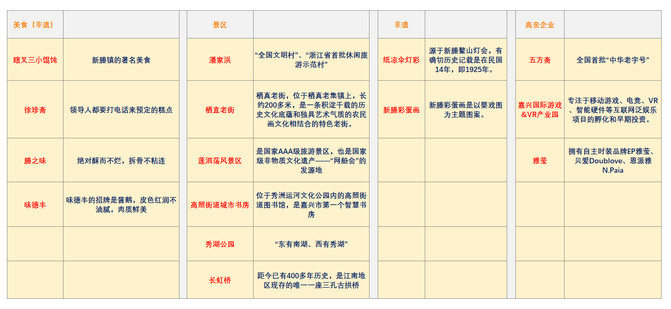
Jiaxing, a prosperous and prosperous place since ancient times, is a typical water town in Jiangnan. Amidst the misty rain and mist, the "small bridges, flowing water, and homes" have a unique flavor.
The world is familiar with Wuzhen and Xitang Ancient Town, which hold the China Internet Conference. They forget that the Wufang Zhai they usually eat is also in Jiaxing.
This journey combines eating, playing, and shopping. Of course, during the Mid Autumn Festival, it is important to avoid crowded scenic spots.
The reason for choosing Jiaxing for this short trip is not only because it is close to Hangzhou, but also because Jiaxing's rural areas are all built into beautiful villages. Every village you walk into is built very beautifully, and there are also some intangible cultural heritage delicacies recommended by friends. Be sure to go and taste them locally!
\\\\\\\\\\\
\\\\\\\\\\\
Blind fork three Wonton shop
The blind fork three Wonton has long been known by women and children in Jiaxing. It is a famous delicacy in Xincheng Town. Many urban residents will drive from the urban area to have a bowl of it on weekends. It is a famous online celebrity store in Jiaxing.
The blind fork three Wonton is characterized by freshness, fragrance, beauty and spiciness. Its founder, Chen Chunyuan, was born in Fengcheng, Jiangxi Province. At the beginning of liberation, it began to operate Wonton for a living.
The feature of this Wonton is its thin skin. After cooking, it floats on the soup like an inflated ball, waiting for you to eat one by one.








Xu Zhenzhai (Zhenfengwu Road Branch)
This is Mid-Autumn Festival. Go to Xu Zhenzhai, a famous intangible cultural heritage pastry shop in Jiaxing, and buy some moon cakes.
The boss is very polite and wants us to try it. We knew this mooncake was very delicious before, but let's try it first.
I bought a few bottles and brought them home to eat for my relatives and friends.








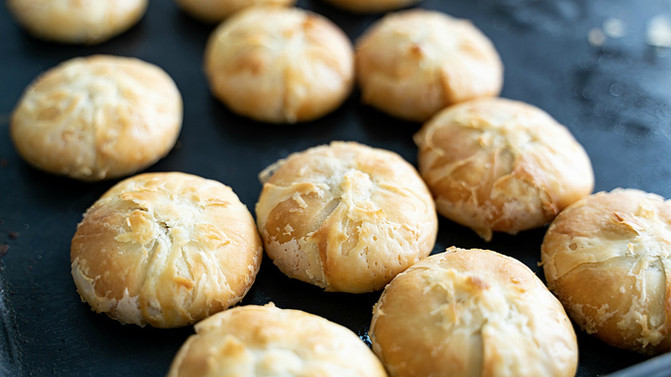
Chengzhiwei (Xincheng Store)
Xincheng has a long history of raising sheep, and local residents have always had the habit of eating lamb. Every autumn, the lamb begins to fragrance, with Luodong's lamb being the most famous. The chef of Chengzhiwei is the inheritor of Xincheng Luodong lamb, and many foodies come to Xincheng just to have a bite of the lamb noodles here.
The reason why meat noodles are delicious is mainly due to three considerations. Firstly, the selection of ingredients is important. A goat with a mouth full of teeth for a year can kill about 30 pounds of white meat per head. The meat is tender, with a light fishy smell and the best taste; Secondly, the method is exquisite. Instead of using an iron pot, a pottery pot is used to cook a 40 pound pot of lamb, including lamb feet and tripe. First, roll it over high heat, then turn it to low heat and simmer. It must be simmered for 2 hours before ceasing fire and continuing to simmer for at least 6 hours. Therefore, the lamb is cooked overnight, absolutely crispy and not rotten, and does not stick when bone is removed; There is also a preference for ingredients, such as red dates, goji berries, ginger, chili peppers, sugar, yellow wine, natural spices, soy sauce, salt, etc., to make the lamb fat but not greasy when cooked.






Wei Defeng
Weide Feng's signature is sauce goose, with a red and non greasy skin and delicious meat. It sells well every day during the Xincheng Food Festival held in major shopping malls in Jiaxing. Kill and marinate the sauce goose now, never use frozen meat. The secret to delicious food is freshness. According to legend, in the eighth year of the Kangxi reign of the Qing Dynasty (1669), the first generation of Emperor Wen, Zhu Yizun, visited the gentry of Xincheng, Xu Tong. Xu Tong invited his master to the countryside (now Daluo Bridge, Huisi Village, Luodong Township, Xiuzhou District) to taste the sauce goose made by the Lin family in the village. Zhu Yizun, who has always enjoyed eating duck meat, was unaware that goose meat was also so delicious, and even called it "delicious" (meaning "flavorful" in Jiaxing dialect). The owner didn't pay much attention and continued to make three or two sauce goose skewers daily as usual, which were taken to Xincheng Market Town for trial sales, gradually gaining popularity. The owner recalled that Zhu Yizun once praised "the best taste", so he opened a single room "Weide Feng Sauce Goose Shop" in Xincheng Town.
In the third year of the Xianfeng reign of the Qing Dynasty (1853), Lin Yuzhang, a descendant of the Lin family and the owner of the shop, was embroiled in a lawsuit. "Weide Feng" closed down the shop and ceased operations, and the name faded out of people's sight. During holidays, the Lin family still remembers to make sauce geese at home and practice their skills. Occasionally, they accept important banquets such as rural weddings and funerals.
In 1997, Gu Xiaofeng fell in love with Xie Qinqin, the fifth generation inheritor of the Lin family's skills. He had the opportunity to learn from his mother-in-law and Xie Qinqin's mother Zhu Afen, and worked hard to restore the ancient method of making sauce geese created by his predecessors. In 2013, Gu Xiaofeng established Jiaxing Weizhizhai Food Co., Ltd. at 57 Dongsheng Road, Xincheng Town, Xiuzhou District (two years later, the company relocated to 756 Penglai Road).
The selected geese for Weide Feng sauce goose are all around four to five years old. They are plump, tender, and nutritious. The sauce goose has a tender and delicious taste, crispy but not rotten, and the sweet, salty, and fragrant flavors blend harmoniously between the lips and teeth. After swallowing, it still retains its fragrance for a long time. In August 2015, Weide Feng sauce goose, salted duck, and duck neck were selected as famous dishes in Zhejiang cuisine.







Wufang Studio
The "Wufangzhai" brand was founded in 1921 and is one of the first "Chinese time-honored brands" in China, mainly engaged in food processing, sales, and catering services.
The brand "Wufangzhai" has a long history and profound cultural heritage. In 1921, Zhejiang businessman Zhang Jinquan opened the first Zongzi shop in Zhangjia Lane in Jiaxing City, which was jointly funded by three people to form five shares, so it was named "Wufang Zhai", meaning "Wugu Fangxin", which opened the century long history of the time-honored brand. In the 1940s, Wufangzhai Zongzi was known as the "King of Zongzi" with the characteristics of "glutinous but not sticky, fat but not greasy, fragrant and glutinous, and moderately salty and sweet". In 1956, a public-private partnership, "Rongji", "Heji", "Qingji" three "Wufang Zhai" and "Xiangxiang Zhai" four together into a "Jiaxing Wufang Zhai Zongzi Store". In the past century, Wufangzhai has promoted Chinese culinary culture, adhered to the path of quality, continuously innovated and developed, and forged a well-known golden signboard. It has also become a leading enterprise in China's traditional food industry.










Panjiabang
Panjiabang Village is located in the southern part of Xincheng Town, Xiuzhou District, 10 kilometers from Wuzhen Scenic Area and 5 kilometers from Jiaxing City. The entire village covers an area of 4.06 square kilometers and has been awarded titles such as "Provincial Beautiful Rural Boutique Characteristic Village", "National Civilized Village", "First Batch of 3A level Scenic Village in Zhejiang Province", "First Batch of Leisure Tourism Demonstration Village in Zhejiang Province", and "National Key Village for Rural Tourism".
The village has a beautiful environment and profound cultural heritage. There are well preserved historical relics such as millennium old catalpa trees, century old beech trees, ancient wells from the Song Dynasty, as well as the former residence of Li Chaosheng in the Qing Dynasty, private schools in the Tang Dynasty, and old educated youth halls. There is a silkworm museum, theme park, parent-child play area, expansion training base, barbecue and countryside sightseeing area in the village, as well as a local flavor corridor, food square, ancient tree group photo area, water wheel family, and happy farm. It is a high-quality rural tourism attraction that integrates vacation and leisure, rural ecology, and cultural experience. In the first half of this year, Panjiabang Village received over 216000 tourists and achieved a total tourism revenue of over 6.56 million yuan, becoming a well-known "internet celebrity village" in Jiaxing.












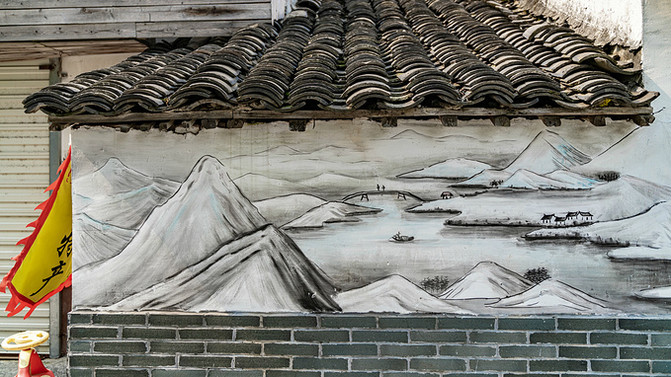














Qizhi Old Street
Qizhen Old Street is located in Qizhen Old Market Town, with a length of about 200 meters. It is a characteristic old street that combines a thousand year long historical and cultural heritage with a unique artistic style of farmer painting culture. Qizhen Temple and Laococoon Station are both built on the old street. Qizhen Old Street is the memory of Qizhen elderly people, with ancient residences and old artists, and it also carries the primitive living state of Qizhen.












Liansidang Scenic Area
Jiaxing Liansidang Scenic Area is located on the north bank of Liansidang in Wangjiangjing Town, Xiuzhou District, Jiaxing City, Zhejiang Province. It is adjacent to the Beijing Hangzhou Grand Canal and within 15 kilometers of Jiaxing City, Shenjiahu, and Zhajiasu Expressway. It covers an area of 146 acres and has a water area of over 2800 acres. It is a national AAA level tourist attraction, as well as the birthplace of the national intangible cultural heritage - the "Net Boat Festival". It is also the location of the first folk belief site in Zhejiang Province - the "Liu Wang Temple". It is also a blessed place to light incense and pray for blessings, and a destination to taste the folk culture of water towns. The architecture of the scenic area is mainly in the traditional style of Jiangnan gardens, with more than 60 individual tourism resources including Liu Wang Temple, Jiangnan Water Town Fishery Culture Museum, Liu Gong Pagoda area, four major scenic spots on the landscape riverbank, and two auxiliary parts such as ecological parking lots and shopping streets.
The main tourist feature of the scenic area is the "Net Boat Festival", which is a folk belief activity formed by the people. It has been passed down from the Ming Dynasty to the present day for more than a hundred years. In order to worship General Liu Chengzhong, a hero of locust control and disaster relief in the late Yuan Dynasty, the temple fair is used to pray for good weather, safe entry and exit, and a bountiful harvest of agriculture and fish. Through temple fairs for sightseeing, entertainment, leisure shopping, and emotional expression, more than 140 social organizations are formed. During the Spring Festival, Qingming, and Mid Autumn Festival, boats of fishermen and boat people from Jiangsu, Zhejiang, Shanghai, and other places gather in the Liansi Dang, mooring like scales, and it has become a spectacular and distinctive Jiangnan water temple fair. During the Netboat Festival, there were crowds and flags standing tall. Folk performances such as meat and incense, dragon dance, lion dance, flower drum, lotus and Xiang dance, yangko, and acrobatics were wonderful and varied, making you feast your eyes. Liu Wang Temple was awarded the Zhejiang Province Folk Belief Culture Research Base in March 2016 and the Zhejiang Province Key Folk Belief Activity Venue in 2017.








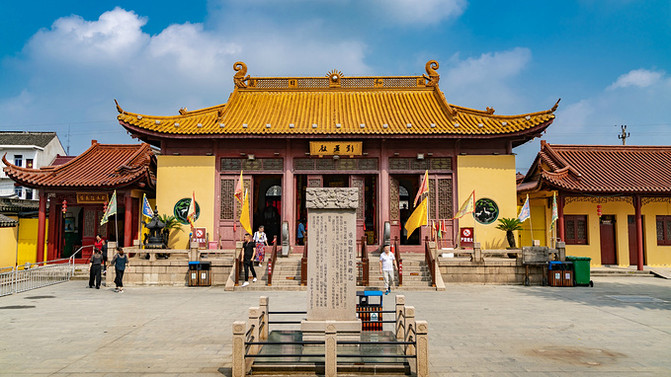








Gaozhao Street Urban Study
The Gaozhao Street Library, located in the Xiuzhou Canal Cultural Park, is the first smart study in Jiaxing City. Since its opening in April 2018, it has become a "popular library" and has been welcomed by many reading enthusiasts. The library is divided into two parts: traditional areas and smart study rooms. During the day, these two parts are connected to form an overall space; At 5 pm in the evening, the door between the two will close, forming two independent spaces. The smart study has opened a book self-service service, which uses a citizen card or facial recognition system for entry and exit, borrowing and returning. It is also equipped with an electronic borrowing machine, which can download and read e-books on mobile phones.











Xiuhu Park
Xiuhu Lake is located on the north side of Xinchengtang in Xiuzhou District, Jiaxing City, covering a total area of 1610 acres, including 780 acres of water area. Based on the basic functions of water source conservation and water quality preservation, with a simple green environment and rich vegetation landscape as the main features, a spatial structure layout of "three lakes and eight gardens, one ring and six banks" is formed. With ecology, leisure, art, and technology as the themes, it integrates the historical and cultural heritage and distinct humanistic characteristics of Xiuzhou District, showcasing a high-quality modern rural natural ecological landscape. The construction of Xiu Lake, with its southern lake to the east and Xiu Lake to the west, has greatly enhanced the urban image and taste of Xiuzhou. Among them, the "Eight Scenic Spots of Xiu Lake" are the most worthwhile. The "Eight Scenic Spots" are respectively: beautiful and magnificent water, artistic lake heaven and earth, leisurely courtyard by the lake, winding water and long slope, exploring spring in the plum garden, shallow bay competitive music, Li Ren Bridge bank, and Han style ancient charm.







Changhong Bridge
Changhong Bridge was first built in the 39th year of the Wanli reign of the Ming Dynasty (1611), with a history of more than 400 years. It is the only existing three arch ancient bridge in the Jiangnan region and the largest stone arch bridge built on soft soil foundation in the northern plain of Zhejiang. It is named after the appearance of Changhong lying on the waves and is the most famous cultural relic and historical site in the Wangjiangjing Canal section. The total length is 72.8 meters, the bridge deck is 4.9 meters wide, the net span of the main hole is 16.2 meters, the arch height is 10.7 meters, and the spans on both sides are 9.3 meters each. There are 57 stone steps on each side. The four stone beasts on the side of the bridge are called pit vipers, which are one of the nine offspring of the mythological dragon. They were established in 2007 to prevent the bridge from being hit by passing ships. The bridge railing is composed of long stones, chiseled inward into an arc that can be used for people to sit on. There is a stone fiber path built inside the opening of the Xipo Bridge, which is now a ferry stop. The originally tall stone tablet archway at the bridgehead was demolished after liberation.







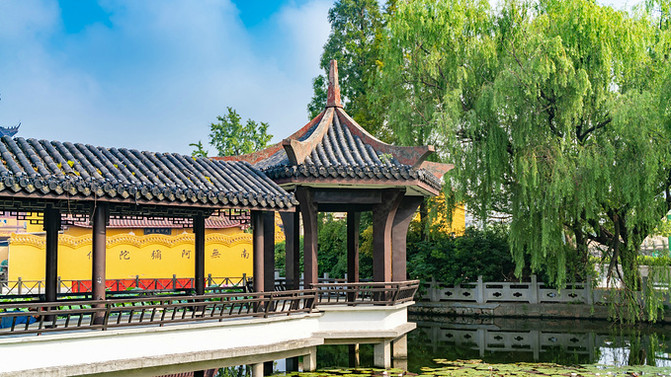


Intangible cultural heritage
Paper umbrella colored light
Originating from the Aoshan Lantern Festival in Xincheng, there is a precise historical record that it occurred in 1925, the 14th year of the Republic of China. The paper umbrella lantern color is a unique handicraft in Xincheng Town, which was popular in the Jiangsu and Zhejiang regions at that time, even on par with the dragon and phoenix flower candles. Paper umbrellas are not ordinary umbrellas used for shading and shelter from rain, but a unique folk lantern color that has been passed down since the Qing Dynasty. When there is a temple fair in the local area, people are arranged to support it, light candles to guide the way, and lead pilgrims around Xincheng Ancient Town. Qifu has abundant grains in the local area.
The paper umbrella lantern color lies in its exquisite craftsmanship, which was first painted by painters on rice paper with themes such as landscapes, figures, flowers, or dramas such as "The West Chamber" and "Dream of the Red Chamber". Then stick it onto a flat oil paper and mount it on the back of the oil paper with rice paper or cotton paper. Then, according to the thickness of the lines drawn on the painting, use needles of different sizes to create holes. Finally, each painting has six sides and 18 circular shapes resembling umbrellas. The six sides of the frame and the top are respectively decorated with blue printed cloth. Candles or electric lights are lit inside the umbrella, passing through the small holes in the pattern. At the same time, the pattern on the picture will be mapped crystal clear, which is what we can see now as the Xincheng paper umbrella. Due to the high cost of making a paper umbrella at that time, the number of folk collections was very small, and now only the city museum has a collection, with only 5 remaining.



Xincheng Easter egg painting
The Xincheng Easter egg painting is themed around baby scenes. Infant play painting is a type of Chinese character painting. During the Tang and Song dynasties, the technique gradually matured, with children as the main object of painting and the main purpose of expressing innocence. Therefore, the images were rich and the forms were interesting. Each different ancient toddler's shape is very cute, some holding a bright flower basket, some playing cuju, some holding peaches, some clapping, and some bowing. The fingers, hairstyle, and expression are all vividly portrayed. Xu Huanhuan, the inheritor of the intangible cultural heritage of Jiaxing City's Easter egg painting, passed down the name "Xincheng Easter egg painting" from her father Xu Yuanchun. Xu Laotai was born in 1943 in a scholarly family in Xincheng Town, and her father's calligraphy and painting skills influenced her. Xu Huanhuan has been learning painting with her father since childhood. By chance, she discovered two Easter eggs with baby scenes in the closet of her attic. Upon inquiry, she found out that they were painted by her grandfather Xu Jincheng, who had an exceptional love for them. She then pestered her father to learn "Easter egg painting". Painting on eggshells is not like painting on paper. The texture and shape of eggshells test the author's painting skills. A well drawn goose egg is more vivid and loved by everyone, not only by children but also by adults, who cannot put it down. Making Easter eggs generally consists of five steps: first, poke a hole to get the egg white; The second is roasted goose eggshells; Thirdly, drain the water inside the eggshell; The fourth is goose egg painting; The fifth is to install lifting rings.




ocarina



Shopping games
Yaying Group
Yaying Group Co., Ltd. was founded in 1988 and owns independent fashion brands EP Yaying, Beiai Doublove, and Enpaiya N Paia, Boutique retail collection store brand Daya Jia DA YA JIA, elegant and beautiful store GraceLand, and Xiaoya children's clothing Little Space. The group has opened nearly a thousand high-quality terminal stores in over 210 cities, including Beijing, Shanghai, Guangzhou, Shenzhen, Macau, and Kuala Lumpur, and has an excellent online sales network.




















Jiaxing International Games; VR Industrial Park
Jiaxing International Games; VR Industrial Park is a brand professional incubator jointly built by Mickey Technology and Xiuzhou National High tech Zone in 2016, focusing on the incubation and early investment of Internet pan entertainment projects such as mobile games, e-sports, VR, intelligent hardware, etc.
The industrial park provides the necessary funds, venues, human resources, legal, financial, administrative, and public relations services. By creating four major platforms, namely "technology information services, enterprise entrepreneurship services, technology talent services, and technology achievement transformation," the park enhances its service enhancement capabilities.
To encourage entrepreneurship and solve the financial difficulties faced by start-up enterprises, the industrial park provides various financing channels for settled enterprises: 1. Mi Shuo Fund: jointly initiated by Mi Qu Technology, Jiaxing Transformation and Upgrading Industry Fund, and Xiuzhou National High tech Zone. 2. Xingmang Venture Capital Fund: jointly initiated by Zhejiang Xingmang and Jiaxing Xiuhu Venture Capital Innovation Equity Investment Fund, it is mainly a start-up fund for entrepreneurial small teams. 3. Timely Rain Plan: Giant Venture Capital and Miqu Game Factory carry out the Timely Rain Plan, which is invested by Giant Venture Capital, and the game factory provides venues and incubation management. Since 2016, the incubator in the park has won honors such as "Xiuzhou District Creative Space", "Jiaxing City Creative Space", and "Jiaxing City level Incubator".












Previous Article:Three days and two nights, playing Huayi Brothers Film World and Xitang Ancient Town
